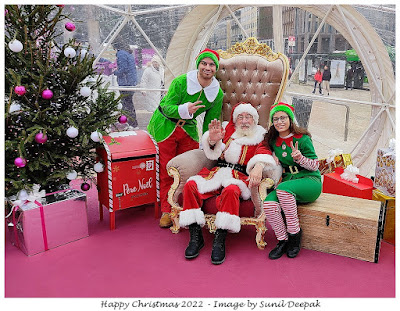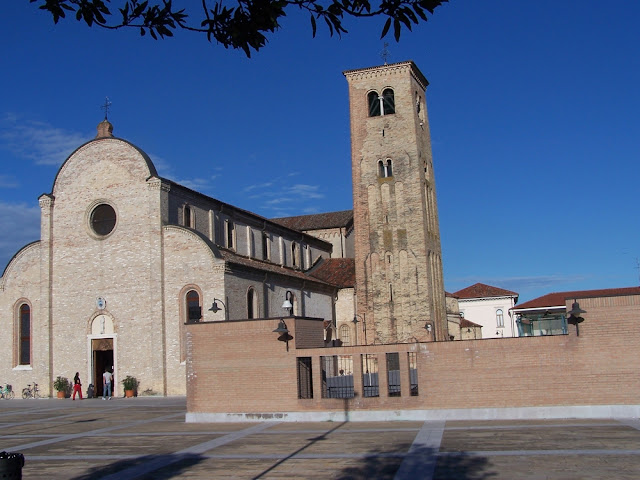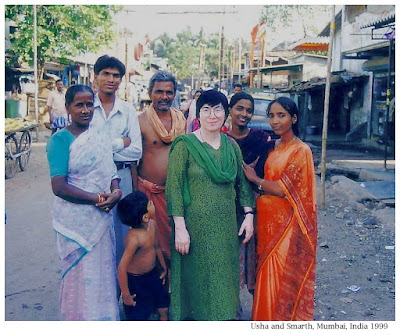Museo, the camera museum of Gurgaon in NCR (India) is a vibrant cultural space in a rapidly growing urban area, which needs many more such spaces. An initiative of the well known photographer Aditya Arya, who is passionate about photography conservation, restoration and archiving, it formally belongs to the India Photo Archive Foundation. (Image: Aditya Arya in the lobby of Museo)
During my last visit to India in late 2022, most of the time I was unwell and bed-ridden. The highlight of this stay was a visit to Museo during which I had a brief encounter with Aditya.
This visit to Museo was also an opportunity to visit and on-going art exhibition organised by Oxygen Art Guild and curated by Tarun Das. I was lucky to meet and speak to Tarun as well.
Thus, this post is about both Museo Camera Museum and the Oxygen Art Guild exhibition. I am not going to repeat the information about the backgrounds of Museo museum, Aditya Arya and Oxygen Art Guild , you can check those on their respective websites. This post is mostly about the things which had especially struck me during this visit. Before I start, I would also like to recommend you to check the different old-pics collections at the Aditya Arya Photo Archives website.
Museo Location
Museo is located off a small road in front of the Galleria market (DLF phase 3, Nathupur) in downtown Gurgaon. The nearest Delhi Metro stations are IFFCO Chowk and HUDA City Centre, from where you can take an auto or a cab to reach Museo. It has sufficient parking space but its location on a narrow and busy road can be tricky to navigate.
If you are visiting Gurgaon and are wondering about places to visit, do visit and spend some time in Museo.
Museo Activities
Museo is a vibrant cultural space with some permanent exhibitions and areas for temporary exhibitions. Photography is encouraged in all the museum spaces.
For example, it has weekend classes on photography (and other cultural activities such as dance classes) including the one year photography diploma course as well as different workshops (when I visited, there were posters of workshops about cyanotype, film and analog photography, salt print process, environmental portraits by Sundeep Bali and street photography).
There were also some on-going exhibitions, about which I have written below and there was a live music performance by Ruchika and Deepak Castelino. The ground floor of the museo building has the camera museum while upstairs are the different exhibition and workshop spaces.
Camera Installations
There were some installations made out of old cameras or in which cameras played a significant role scattered around in the building.
One striking installation was the "Hug Me" man by the well known Gurgaon artist Gopal Namjoshi made from junk metal and old analog cameras. Namjoshi is known for his monumental installations in which often junk metals play an important role.
Another installation which I liked, had a mannequin surrounded by all kinds of carrying bags for the old analog cameras. (Image below has the 2 installations - the Hug Me man and the camera-bags)
The third camera installation which particularly struck me was the inverted pyramid handing above the central gallery. There were also some big old cameras from early 20th century.
Temporary Exhibitions
Among the temporary exhibitions, I especially loved "Nirvasanama", which documented the life in exile of Dev Shumsher (1862-1914), the "liberal" Prime Minister of Nepal, who was exiled in India in early 20th century.
Colours of Convergence
In the art exhibition "Colours of Convergence" organised by Oxygen Art Guild and curated by Tarun Das I liked the works of - watercolors by Sudhangsu Bandopadhyay, woodcut on paper by Jintu Mohan Kalita, oil painting by Aniruddha Mukherjee, acrylic on canvas by Apurba Karati and very especially the Cityscapes of cows by Jiban Biswas.
Last year, I had met Valeria Bertesina, an artist who curates the Paper Art Biennale in Schio and that had been my introduction to understanding the meaning of "curating art exhibitions". In Museo, I had an opportunity to talk to Tarun Das (in the image below), who had curated the exhibition "Colours of Convergence", which was another opportunity to reflect on the different ways in which individuals can "curate" exhibitions, imprinting it with their dialogues with the artists in selecting and deciding what gets exhibited and how.
Vintage Analogic World
As we go deeper into the digital world, it is not just analog cameras and photographic prints which are disappearing but the whole world is changing. This nostalgia for the disappearing world is represented in Museo by a painted ambassador car, an old lambretta scooter, a biscope and a colourful three-wheeler.
Sculptures in Museo
There are also a few sculptures scattered in the open area surrounding the Museo, which are worth looking at. These include 2 sculptures of boys reading a book.
In the End
Except for the malls, which have a primary commercial purpose, Gurgaon has only a few cultural spaces. Another such local cultural space is the Sanskriti Museum.
I hope that the next time you are in Gurgaon and are wondering about places to visit and things to do, you can visit the Museo Camera Museum!

.jpg)
.jpg)

.jpg)
.jpg)
.jpg)
.jpg)
.jpg)
.jpg)
.jpg)


.jpg)
.jpg)


.jpg)

.jpg)






























